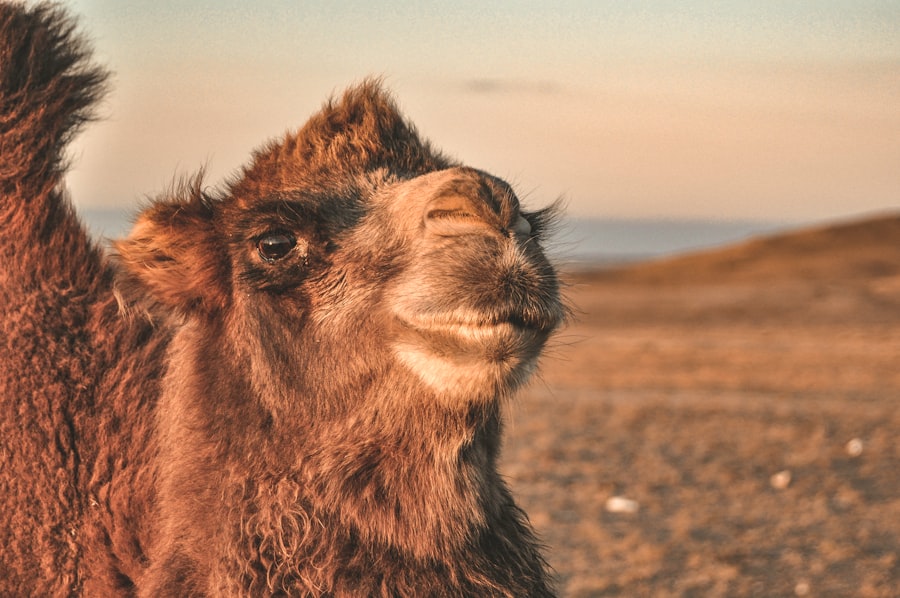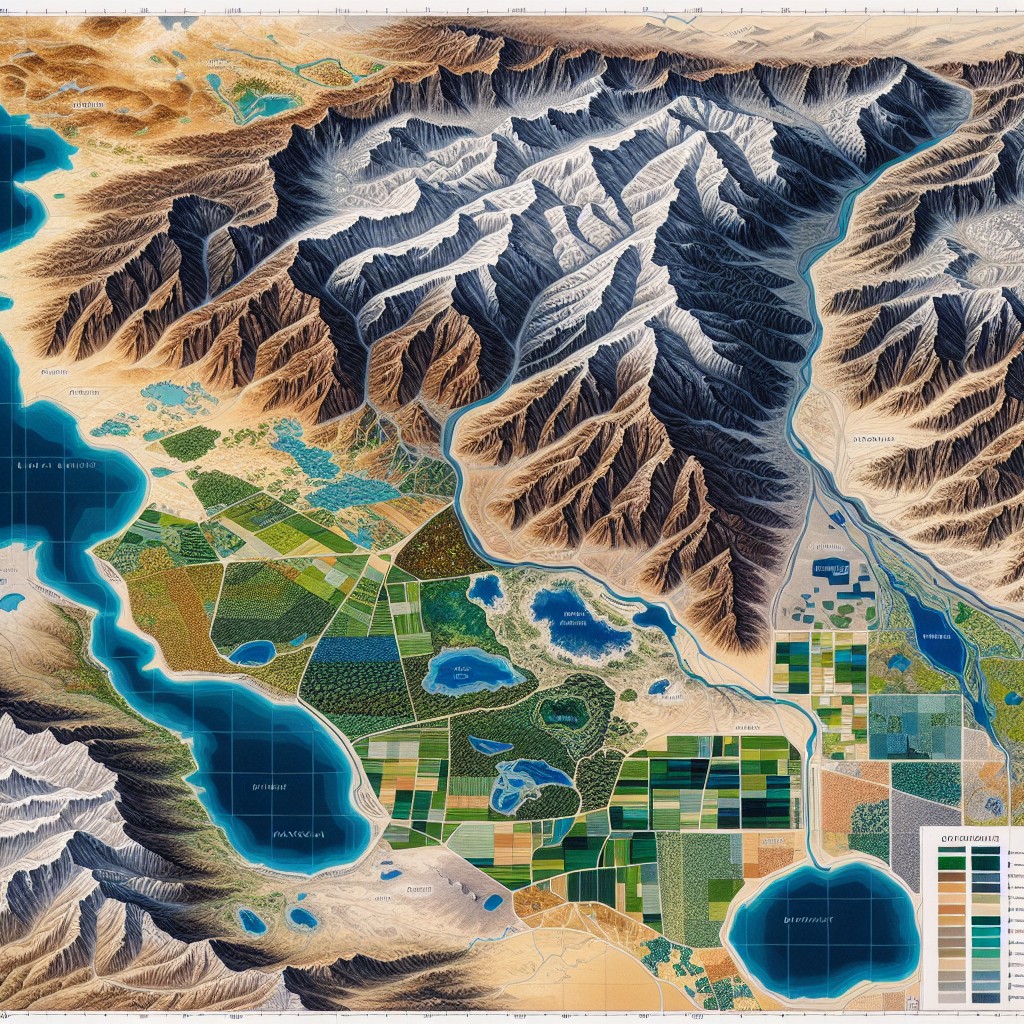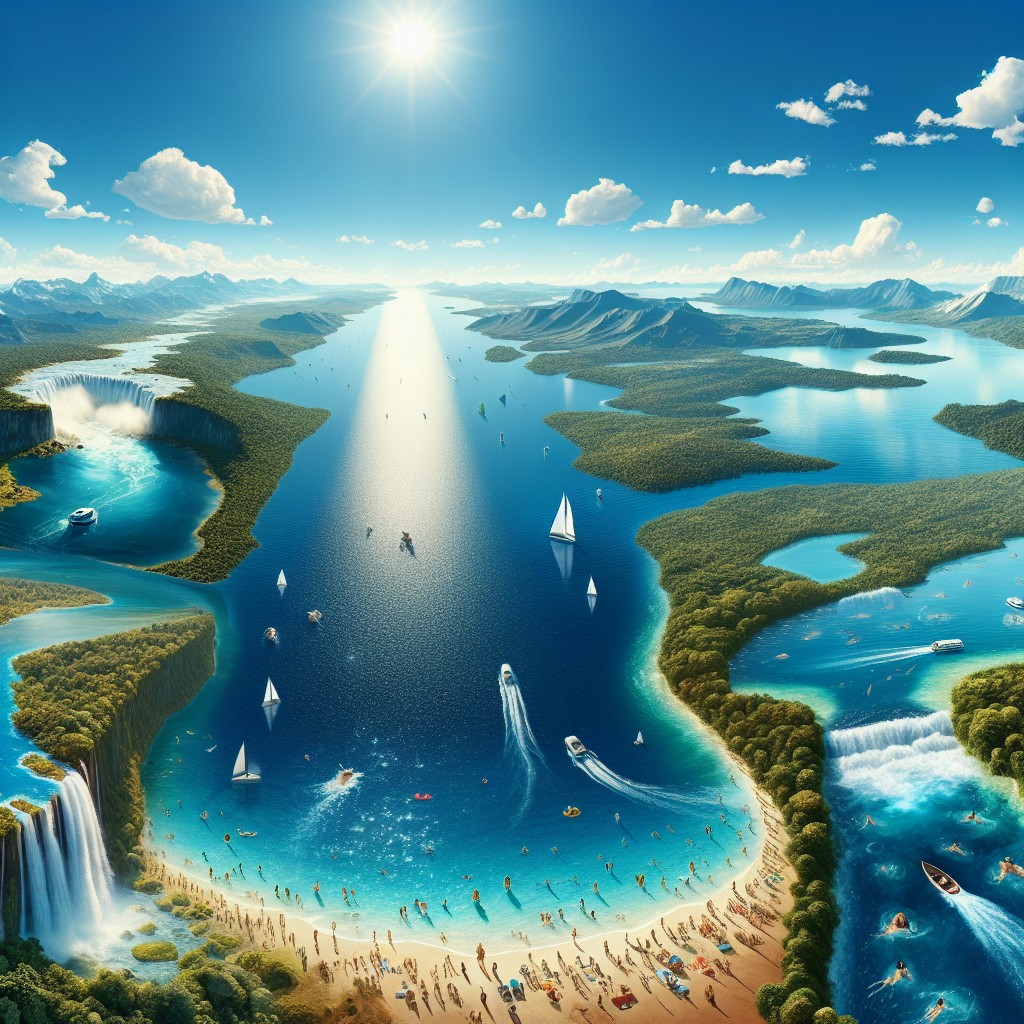Mongolia, a landlocked country in East Asia, is a destination that is often overlooked by travelers. However, those who venture to this remote and enchanting land are rewarded with a wealth of natural and cultural treasures waiting to be discovered. From its unique geographical phenomenon known as the “Eternal Blue Sky” to its rich nomadic culture and fascinating history, Mongolia offers a truly immersive and unforgettable travel experience.
Summary
- Mongolia is a land of mystery and wonder, waiting to be explored.
- The unique geographical phenomenon of the Land of Eternal Blue Sky is a must-see for visitors.
- Nomadic culture is an integral part of Mongolia’s way of life and should be experienced.
- The Great Mongol Empire has a rich history and heritage that is worth discovering.
- Mongolia’s natural wonders, including the Gobi Desert and rare wildlife, are hidden treasures waiting to be uncovered.
The Land of Eternal Blue Sky: A Unique Geographical Phenomenon
One of the most striking features of Mongolia is its “Eternal Blue Sky.” This phenomenon refers to the country’s exceptionally clear and blue skies, which are visible for the majority of the year. The absence of pollution and minimal cloud cover contribute to this unique phenomenon, creating a landscape that seems to stretch endlessly into the horizon.
The Eternal Blue Sky has a profound impact on Mongolia’s climate and landscape. The country experiences extreme temperature variations, with scorching hot summers and bitterly cold winters. The clear skies allow for intense sunlight during the summer months, resulting in high temperatures. In contrast, the lack of cloud cover during winter leads to frigid temperatures, often dropping below -40 degrees Celsius.
In Mongolian culture, the sky holds great significance. It is believed to be the dwelling place of Tengri, the supreme god of the Mongols. The nomadic herders who inhabit the vast steppes of Mongolia have a deep spiritual connection with the sky and believe that it brings good fortune and blessings. The Eternal Blue Sky is not only a geographical phenomenon but also a symbol of freedom, vastness, and spirituality in Mongolian culture.
Nomadic Culture: A Way of Life in Mongolia
Mongolia is renowned for its nomadic culture, which has been preserved for centuries. Approximately 30% of Mongolia’s population still leads a nomadic lifestyle, herding livestock and living in traditional felt tents known as gers. This way of life is deeply ingrained in the fabric of Mongolian society and offers a unique insight into a vanishing way of life.
Livestock plays a central role in Mongolian culture, providing sustenance, transportation, and clothing for the nomads. The most common livestock are horses, sheep, goats, and camels. Nomads rely on their animals for survival and have developed a deep bond with them. They move their herds to different grazing areas throughout the year, following ancient migration patterns that have been passed down through generations.
Traditional practices and customs are an integral part of nomadic culture in Mongolia. The Naadam Festival, held annually in July, is a celebration of the “Three Manly Games” – wrestling, horse racing, and archery. This festival showcases the skills and strength of nomadic warriors and is a testament to the rich cultural heritage of Mongolia.
The Great Mongol Empire: A Rich History and Heritage
| Aspect | Metric |
|---|---|
| Duration | 1206-1368 AD |
| Founder | Genghis Khan |
| Capital | Karakorum (1206-1260 AD) and Khanbaliq/Beijing (1260-1368 AD) |
| Area | Largest contiguous empire in history, covering 24 million square kilometers |
| Population | Approximately 100 million people |
| Religion | Initially shamanism and Tengrism, later Buddhism, Islam and Christianity |
| Legacy | Established the Silk Road, promoted trade and cultural exchange, and influenced the development of Central Asia, Russia, China and the Middle East |
Mongolia has a rich history that dates back thousands of years. However, it is most famous for being the birthplace of Genghis Khan and the seat of the Great Mongol Empire. Established in the 13th century, the Mongol Empire was the largest contiguous empire in history, stretching from Eastern Europe to Asia.
Under the leadership of Genghis Khan and his successors, the Mongol Empire conquered vast territories and established a highly efficient administration system. The empire facilitated trade along the Silk Road, promoted cultural exchange, and fostered religious tolerance.
The influence of the Mongol Empire can still be seen in modern-day Mongolia. The country’s national flag features the Soyombo symbol, which was used as a national emblem during the time of Genghis Khan. Additionally, many Mongolians take pride in their warrior heritage and continue to celebrate their nomadic traditions.
Uncovering the Hidden Treasures: Exploring Mongolia’s Natural Wonders
Mongolia is a land of breathtaking natural beauty, with a diverse range of landscapes waiting to be explored. From vast steppes and rolling hills to towering mountains and pristine lakes, the country offers a paradise for nature lovers.
Preserving Mongolia’s natural treasures is of utmost importance. The country is home to several endangered species, including the snow leopard, Gobi bear, and wild Bactrian camel. Efforts are being made to protect these species and their habitats through national parks and conservation initiatives.
Popular destinations for nature lovers in Mongolia include the Khuvsgul Lake, known as the “Blue Pearl of Mongolia,” and the Terelj National Park, which offers stunning rock formations and opportunities for hiking and horseback riding. The Orkhon Valley, a UNESCO World Heritage Site, is another must-visit destination, with its ancient ruins and beautiful landscapes.
The Gobi Desert: A Fascinating Landscape of Contrasts

The Gobi Desert is one of Mongolia’s most iconic landscapes. Stretching across southern Mongolia and northern China, it is the largest desert in Asia and one of the most unique ecosystems in the world. Despite its arid conditions, the Gobi Desert is teeming with life and offers a fascinating landscape of contrasts.
The Gobi Desert is characterized by its vast sand dunes, rocky outcrops, and barren plains. It is also home to several unique features, such as the Flaming Cliffs, known for their red sandstone formations and dinosaur fossils. The Khongoryn Els sand dunes, also known as the “Singing Sands,” are another highlight of the Gobi Desert, with their towering dunes that create a mesmerizing sound when the wind blows.
Despite its harsh conditions, the Gobi Desert supports a surprising variety of wildlife and plant species. Endangered species such as the Gobi bear and the wild Bactrian camel call this desert home. The desert is also a haven for birdwatchers, with over 200 species of birds found in the region.
Wildlife of Mongolia: A Haven for Rare and Endangered Species
Mongolia’s vast and unspoiled landscapes provide a sanctuary for rare and endangered species. The country is home to a diverse range of wildlife, including the elusive snow leopard, the majestic Altai argali sheep, and the endangered Przewalski’s horse.
Preserving Mongolia’s wildlife is crucial for maintaining the delicate balance of its ecosystems. Efforts are being made to protect these species through the establishment of national parks and conservation programs. The Great Gobi Strictly Protected Area, for example, is a UNESCO World Heritage Site that serves as a refuge for several endangered species.
Tourists visiting Mongolia can contribute to the conservation efforts by supporting responsible tourism practices. By choosing eco-friendly accommodations, participating in wildlife monitoring programs, and respecting the natural habitats of these animals, visitors can help ensure the long-term survival of Mongolia’s unique wildlife.
Traditional Cuisine: A Delicious Journey Through Mongolian Food
Mongolian cuisine reflects the country’s nomadic heritage and is known for its hearty and flavorful dishes. Traditional Mongolian food is centered around meat, dairy products, and grains, reflecting the nomads’ reliance on livestock for sustenance.
One of the most iconic dishes in Mongolian cuisine is “buuz,” which are steamed dumplings filled with minced meat and onions. Another popular dish is “khorkhog,” which consists of meat (usually lamb or goat) cooked with vegetables and stones heated over an open fire. This traditional cooking method gives the meat a unique smoky flavor.
Dairy products also play a significant role in Mongolian cuisine. “Airag,” fermented mare’s milk, is a traditional Mongolian beverage that is enjoyed during special occasions. “Aaruul,” dried curd cheese, is another staple in the Mongolian diet and is often eaten as a snack or used in cooking.
Food holds great importance in Mongolian culture and is often shared with guests as a sign of hospitality. Traditional Mongolian meals are communal, with everyone sitting around a shared plate and using their hands to eat. This dining experience offers a unique opportunity to connect with the local culture and traditions.
Festivals and Celebrations: A Colourful Tapestry of Mongolian Culture
Mongolia is known for its vibrant festivals and celebrations, which offer a glimpse into the country’s rich cultural heritage. These events are an important part of Mongolian culture and are celebrated with great enthusiasm and joy.
The Naadam Festival, held annually in July, is the most famous festival in Mongolia. It showcases the “Three Manly Games” – wrestling, horse racing, and archery – which are deeply rooted in nomadic traditions. The festival attracts participants from all over the country and offers a unique opportunity to witness traditional sports and cultural performances.
Another popular festival is Tsagaan Sar, the Mongolian Lunar New Year. Celebrated in late January or early February, it marks the beginning of spring and is a time for families to come together and celebrate. Traditional customs include exchanging gifts, visiting relatives, and feasting on traditional dishes.
Other festivals celebrated throughout the year include the Eagle Festival, which showcases the ancient art of eagle hunting, and the Ice Festival, held on the frozen surface of Lake Khuvsgul. These festivals offer a chance to experience the vibrant traditions and customs of Mongolia firsthand.
Sustainable Tourism: Preserving Mongolia’s Natural and Cultural Treasures
Preserving Mongolia’s natural and cultural treasures is crucial for the long-term sustainability of tourism in the country. Sustainable tourism practices aim to minimize the negative impact on the environment and local communities while maximizing the benefits for all stakeholders.
Efforts are being made to promote sustainable tourism in Mongolia. The government has implemented regulations to protect national parks and wildlife habitats, and local communities are actively involved in conservation initiatives. Eco-friendly accommodations and tour operators are also emerging, offering responsible travel options for visitors.
Tourists can support sustainable tourism in Mongolia by choosing eco-friendly accommodations, participating in community-based tourism initiatives, and respecting the local customs and traditions. By doing so, they can contribute to the preservation of Mongolia’s natural and cultural treasures for future generations to enjoy.
Encouraging Travel to Mongolia
Mongolia is a land of mysteries and wonders, waiting to be discovered by intrepid travelers. From its unique geographical phenomenon and rich nomadic culture to its fascinating history and breathtaking natural landscapes, the country offers a truly immersive travel experience.
By venturing off the beaten path and exploring Mongolia’s hidden treasures, travelers can gain a deeper understanding of this remote and enchanting land. Whether it’s witnessing the Eternal Blue Sky, experiencing nomadic life firsthand, or marveling at the diverse wildlife and stunning landscapes, a journey to Mongolia promises to be an unforgettable adventure.
So why wait? Pack your bags, embrace the unknown, and embark on a journey to Mongolia. Discover its mysteries, uncover its treasures, and create memories that will last a lifetime.
FAQs
What is Mongolia?
Mongolia is a landlocked country located in East and Central Asia. It is bordered by Russia to the north and China to the south, east and west.
What is the capital city of Mongolia?
The capital city of Mongolia is Ulaanbaatar.
What is the population of Mongolia?
As of 2021, the estimated population of Mongolia is around 3.3 million people.
What is the official language of Mongolia?
The official language of Mongolia is Mongolian.
What is the currency of Mongolia?
The currency of Mongolia is the Mongolian tögrög.
What is the climate like in Mongolia?
Mongolia has a continental climate with long, cold winters and short, mild summers. The country is known for its extreme temperature fluctuations, with temperatures ranging from -40°C in winter to 30°C in summer.
What are some popular tourist attractions in Mongolia?
Some popular tourist attractions in Mongolia include the Gobi Desert, Lake Khövsgöl, the Erdene Zuu Monastery, and the Flaming Cliffs.
What is the economy of Mongolia like?
Mongolia’s economy is largely based on agriculture and mining. The country is rich in natural resources such as coal, copper, and gold. However, the economy has been struggling in recent years due to falling commodity prices and a slowdown in China, Mongolia’s largest trading partner.


